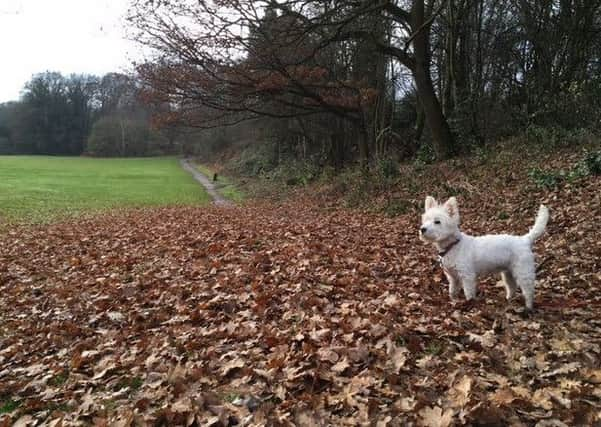COLUMN: How to keep your dog safe when out walking...


The fresh air is lovely and my two dogs - a Westie and greyhound - enjoy being out for hours at a time, even if sometimes it means they get muddy and need a bath!
Walks are an important way of providing regular exercise for dogs. It can give them a chance to sniff around, burn off energy, meet other friendly dogs and spend time with their owners.
Advertisement
Hide AdAdvertisement
Hide AdWalkies should be a fun time for you and your dog and the last thing you want is for your dog to be injured while out and about. So here are some tips on how to keep your dog safe...
Ticks: ticks attach to any part of your dog’s body and feed on their blood. Ticks can pass nasty diseases such as lyme disease onto your dog so it’s best to remove them as soon as possible. Check your dog over after each walk and if you find a tick speak to your vet about how to remove it safely. It’s also a good idea to speak to your vet about prevention of ticks as some flea treatments can also kill ticks.
Grass seeds: although tiny, grass seeds can cause pain and discomfort if they become stuck in a dog’s paws, eyes or ears. Dogs-owners should always give their dogs a check over after walking, particularly if you have been in meadows or woodlands in the spring and summer months and should watch out for any potential signs of discomfort such as your dog shaking their head or licking their paw a lot more than usual.
Poisoning: dogs can be very motivated to eat food they find on the ground. To help prevent dogs eating anything which may be harmful, it’s best that dog-owners make sure their pets have a good recall so can be called back should you have any concerns about what they are approaching. It can also be very helpful to teach your dog to ‘leave’ or ‘drop’ items so that you can ensure they willingly give up anything which you have concerns about them eating.
Advertisement
Hide AdRoad safety: walk your dog on their lead unless you are sure it is safe to let them off - in a new place you won’t always know where roads or other potential hazards are. If walking in dark or dim light make sure your dog has a LED collar or light attached so you and others can still see him.
Advertisement
Hide AdSnakes: the adder is Britain’s only venomous snake and the species generally prefer open habitats such as heathland, moorland and woodland and hunting small mammals and lizards - places dog-walkers are likely to visit.
Adder bites can be extremely dangerous to pets. The bites can cause swelling, bleeding or fever, and dogs walked in adder habitats during spring and summer are more at risk. Animals with suspected adder bites should be kept as quiet and calm as possible, and examined urgently by a vet.
To help the RSPCA continue rescuing, rehabilitating and rehoming animals in desperate need of care please visit our website.